Colorful Destinations Around the World
Whether it’s the white of the Taj Mahal or the blue of Bora-Bora’s waters, a specific hue can affect how we remember a place.
Lavender paints a field purple in Provence, France. The apex of the Dome of the Rock shrine glints gold in Jerusalem, Israel. The red rocks of Sedona, Arizona, jut into a boundless blue sky.
Color makes us stop short in our journeys, compelling us to linger, gawk, and—long after we’ve returned home—remember a destination.
Memory, in fact, works better in color. Psychologists in Europe studying the effects of color noted that we humans are significantly better at recalling color images because color tugs at the senses, creating a stronger connection to the parts of the brain that store and trigger memories.
But color doesn’t just affect your memory of a place. It can affect our mood while we’re looking at it. And that mood’s not just personally motivated; how a color makes us feel is connected to our cultural background. Here’s how certain colors can evoke reactions.
Red
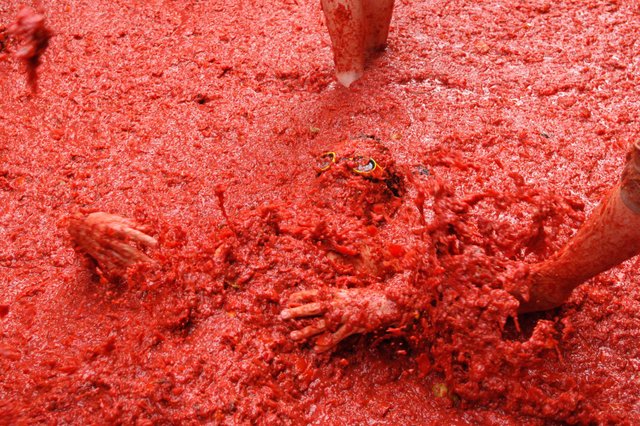
The world’s largest food fight, dubbed La Tomatina, breaks out at 11 a.m. on the last Wednesday of August every year in Buñol, Spain. Tens of thousands of people and 110 metric tons of overripe tomatoes flood the streets in an every-man-for-himself-style melee for one single, all-out, red-dipped hour.
Photograph by Ander Gillenea, Bostok/Redux
Crimson can excite. This exuberant color often signifies a festival, such as La Tomatina, which for an hour on the steamy last Wednesday of every August drenches the streets of Buñol, Spain, in 110 tons of vibrant red fruit. Also in Spain every spring, scarlet scarves denote the daring feats of the Pamplona bull runners.
White
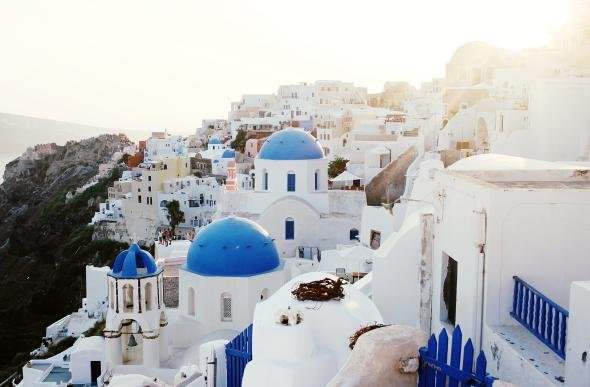
Sunset settles over Oia, Santorini, and a crisp white enclave of houses clinging to the hillside. Originally used to lessen the heat of the sun, then to meet official edict beginning in 1974, the whitewash has become a refreshing and welcoming signature style of the Greek island.
Photograph by Jenni Holma, Getty Images
In some cultures, white calms. Think of those milky houses of Santorini stretching to the sun-dappled Aegean Sea. They have become such a unifying symbol for the Greek island that it’s been a law to paint houses white since 1974. They fit the Western association of white with cleanness and purity.
On the other hand, the glistening snowy marble of India’s Taj Mahal or Myanmar’s Hsinbyume Pagoda—both tributes to beloved wives—are reminders of the Eastern association of white with mourning.
Blue
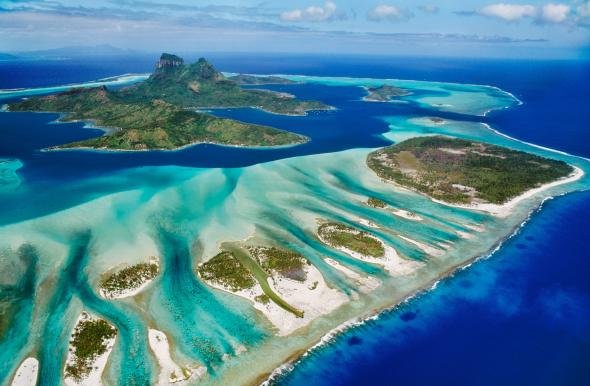
Two tones of brilliant blue waters lap gently at the barrier reef that circles Bora Bora and the green jut of Mount Otemanu. The extinct volcano, at 2,400 feet, beckons with hikes and 4x4 tours that offer unparalleled views of the lagoon and the darker surrounding sea.
Photograph by Frans Lanting, Getty Images
A very saturated blue crosses most geographic boundaries as a favorite, says Stephen Palmer, a psychology professor at the University of California, Berkeley’s graduate school. He says he thinks the near-universal bond to all things blue is that “almost all of the things associated with saturated blue tend to be things people like: a clear sky, clean water, sapphires, lapis lazuli, forget-me-nots.”
Orange
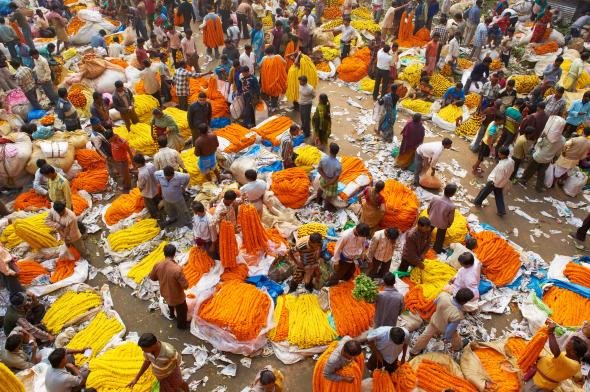
Marigold-garland vendors ply their sunshine-hued wares—used as offerings to Hindu gods and to bring blessings on wedding celebrations—at the Mallik Ghat flower market in the shadow of Howrah Bridge in Kolkata, India. The bridge itself springs to life in a colorful parade beginning about 3 a.m. as up to 2,000 vendors carry the bright strings of yellowy-orange buds across to market.
Photograph by Tuul and Bruno Morandi, Alamy
India’s strand upon strand of orangey marigolds represent the sun and are used to worship Vishnu and his wife Lakshmi. An abundance of the flower at weddings heaps both brightness and prosperity upon the couple. The pumpkin hue also makes for a mesmerizing landscape of sand undulating endlessly across the Sahara in Morocco.
Rainbow
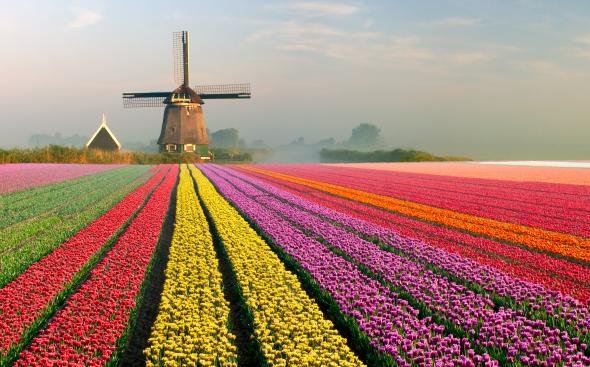
Every April and May, Holland’s plains put on a coat of many colors—in this case, millions of blossoming tulips. Make your way to the Bollenstreek Route (also known as the Bloemen Route, or Flower Route) beginning at Haarlem and you can savor the rainbow for a full 25 miles south to Leiden.
Photograph by Jaap Hart, Getty Images
Often fleeting, like their namesake, rainbow colors can connote an outburst of celebration. The utter profusion of popping dust clouds of every imaginable color during India’s Holi festival celebrates the triumph of good over evil and symbolizes the arrival of spring—and the flirtatious ways of Krishna. Mimicking a rainbow dropped to the plains of Holland, multicolored rows of tulips herald each new spring.
Our reaction to a color isn’t exactly hardwired, says Palmer; it can change over the course of hours or even days. “The more consistently the color is associated with positive experiences, the more the person will tend to like the color,” he says.
In the end, then, an amazing travel experience can make us love one hue in particular. Which color from your travels do you love?
PUBLISHED July 25, 2016 Source: http://www.nationalgeographic.com/travel/travel-interests/arts-and-culture/colorful-destinations-around-the-world/